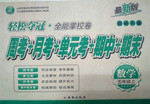题目内容
She’s the equal of her brother_____ intelligence is concerned, but she doesn’t work hard at all.’
A. as well as B. as soon as C. as far as D. as long as
 轻松夺冠全能掌控卷系列答案
轻松夺冠全能掌控卷系列答案Table 1: Major Agricultural Products
Product | Output(产量) 2011 ( 1 million tons) | Increase over 2010 (%) |
Grain | 492.5 | -2.4 |
Oil-bearing crops of which: Peanuts(花生) Rapeseed(菜籽) | 21.5 9.62 9.54 | -2.8 -5.1 3.7 |
Cotton | 4.3 | 2.4 |
Tea | 0.61 | 3.4 |
Fruit | 50.45 | 8.4 |
Meat of which: Pork, beef and mutton | 53.54 41.21 | 8.0 8.0 |
Cow milk | 6.63 | 5.4 |
Sheep wool | 0.29 | -1.4 |
Silkworm cocoons | 0.5 | -2.7 |
Aquatic(水产)products Of which: Fresh water Marine (海) water | 35.61 14.26 21.35 | 8.3 11.8 6.1 |
Table 2: Major Industry Products
Product | Output 2011 | Increase over 2010(%) |
Cloth | 22 billion meters | 5.2 |
Sugar | 6.8 million tons | 6.3 |
Cigarettes | 34.02 million cases | 0.0 |
Color TV sets | 26.43 million sets | 4.2 |
Household refrigerators | 9.86 million | 0.7 |
Total energy production Standard coal | 1.34 billion tons | 0.7 |
Coal | 1.39 billion tons | 0.0 |
Electricity | 1,132 billion kwh | 4.7 |
Steel | 107.57 million tons | 6.2 |
Power-generating equipment | 16.87 million kw | 5.8 |
Metal cutting machine tools | 150,000 | -16.5 |
Cars | 490,000 units | 26.7 |
Tractors | 80,000 units | -2.0 |
Micro-computers | 1.65 million | 18.9 |
1.The output of _______in 2011 increased over 2010.
A. tea, meat, fruit, cloth, steel and cars
B. cows milk, grain, color TV sets and micro-computers
C. fresh water products, coal, fruit and cigarettes
D. cotton, rapeseed, electricity and coal
2.Which of the following saw the greatest change over 2010?
A. Metal cutting machine tools.
B. Fresh water products.
C. Micro-computers.
D. Fruit.
3.The output of grain produced in 2011 was ____that in 2010.
A. over 20 million tons less than
B. about 11.8 million tons less than
C. 12 million tons more than
D. almost as much as

